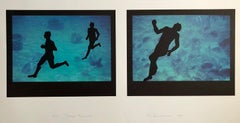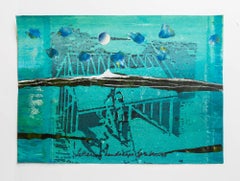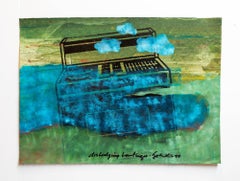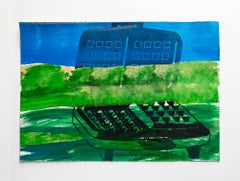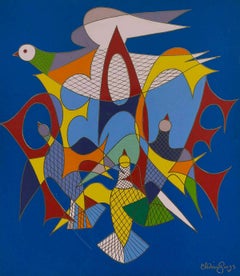Lions Gallery
1990s Contemporary Color Photography
Paper, Color
21st Century and Contemporary Contemporary Abstract Paintings
Canvas, Acrylic
20th Century Conceptual Mixed Media
Mixed Media, Monoprint, Monotype
20th Century Conceptual Mixed Media
Mixed Media, Monoprint, Monotype
20th Century Conceptual Mixed Media
Mixed Media, Monoprint, Monotype
Mid-20th Century Modern More Art
Metal
21st Century and Contemporary Contemporary Landscape Paintings
Canvas, Oil
1970s Contemporary Abstract Paintings
Canvas, Oil
Late 20th Century Modern Abstract Paintings
Acrylic, Board
21st Century and Contemporary Landscape Photography
Photographic Paper
Mid-20th Century Modern Landscape Paintings
Canvas, Oil
20th Century Abstract Expressionist Abstract Paintings
Paper, Gouache
1960s Abstract Expressionist Abstract Prints
Lithograph
1960s Abstract Expressionist Abstract Prints
Lithograph
Late 20th Century Neo-Expressionist Abstract Paintings
Canvas, Oil
20th Century Neo-Expressionist Abstract Paintings
Paper, Oil
20th Century Color Photography
C Print
1980s Surrealist Figurative Paintings
Canvas, Oil
21st Century and Contemporary Neo-Expressionist Abstract Paintings
Canvas, Acrylic
20th Century Folk Art More Art
Mixed Media
20th Century Abstract Prints
Lithograph
1970s Contemporary Animal Prints
Lithograph
1970s Contemporary Abstract Prints
Lithograph
20th Century Animal Prints
Lithograph
1990s Contemporary Abstract Paintings
Mirror, Acrylic Polymer, Mixed Media
20th Century Modern Figurative Drawings and Watercolors
Pastel, Tempera
20th Century Modern Abstract Prints
Paper
1990s Pop Art Abstract Paintings
Canvas, Oil
1980s Contemporary More Art
Wool
1990s Contemporary Figurative Sculptures
Metal
20th Century Modern Landscape Paintings
Canvas, Oil
21st Century and Contemporary Contemporary Abstract Paintings
Canvas, Acrylic
21st Century and Contemporary Contemporary Abstract Paintings
Canvas, Acrylic
20th Century Abstract Expressionist Abstract Drawings and Watercolors
Watercolor, Archival Paper
20th Century American Modern Landscape Paintings
Watercolor, Archival Paper
20th Century American Modern Landscape Paintings
Canvas, Oil
1980s Modern Abstract Prints
Offset, Lithograph
1980s Abstract Geometric Abstract Prints
Lithograph, Screen
1980s Abstract Expressionist Abstract Paintings
Oil
1990s Abstract Expressionist Abstract Paintings
Canvas, Oil
Early 2000s Minimalist Abstract Prints
Monoprint, Color, Etching, Aquatint
20th Century Modern Figurative Drawings and Watercolors
Ink, Watercolor, ABS
20th Century Modern Figurative Drawings and Watercolors
Ink, Watercolor, ABS
20th Century Modern Prints and Multiples
Lithograph
20th Century Modern Prints and Multiples
Lithograph
20th Century Contemporary Abstract Prints
Offset, Screen
Late 20th Century Pop Art Figurative Prints
Lithograph
1980s Modern Abstract Prints
Screen
Late 20th Century Abstract Expressionist Abstract Paintings
Paper, Ink, Acrylic
1960s Surrealist Abstract Sculptures
Metal
20th Century Folk Art Landscape Prints
Screen, Lithograph
20th Century Surrealist Abstract Prints
Glitter, Mixed Media
1990s Contemporary Color Photography
C Print, Photographic Paper
20th Century Expressionist Landscape Prints
Lithograph
20th Century American Modern Interior Prints
Etching
20th Century American Modern Still-life Paintings
Paper, Acrylic
Early 2000s Contemporary Landscape Paintings
Oil Pastel
1980s Contemporary Color Photography
Color
1990s Color-Field Abstract Paintings
Acrylic, Archival Paper
1970s Pop Art Abstract Prints
Lithograph, Offset
